Leica rangefinder cameras have defined small format photography from its beginning and persist to the current day. Maybe you know about the digital rangefinders, including the M11 and the M10 Monochrom, which shoot only black and white but with oh so much capability? Or maybe you’re familiar with the Leica film rangefinders that are still made today, and are even expanding, with the recent announcement of a reissued M6 that is closely based on the original M camera design of the M3 introduced way back in 1954 (Morgan, p.90).
Coming from the other direction in history, perhaps you know about Oskar Barnack and how the 35mm camera was born. The term “Barnack” is now used to describe every Leica rangefinder model prior to the M3. One very important development in the Barnack cameras along the way was the integration of the focusing rangefinder into the camera body. Barnack had very strict requirements for that integration, including that the camera could not outgrow its ability to fit in a pocket, nor become too ugly or expensive (Morgan, p.20). This feat was first achieved and commercialized in 1932 as the Leica II after several years of development.
I have always loved the Barnack cameras, from the earlier models with guess or auxiliary focus to the common IIIF and final bridge-model IIIG of the 1950s. I’ve always wanted a Barnack rangefinder camera in black. In 2022, I found the camera I was looking for, an original 1932 Leica II (serial number 92XXX) with numbers-matching 50mm f/3.5 Elmar collapsible lens (serial number 143XXX) (Serial number references included below).
In order to fully appreciate the challenge that a photographer in the 1930s faced, I decided to shoot with film with a speed contemporary to that time. In the 1930s, iso (then ASA) 25 film was considered fast. Today, the slowest film that Ilford makes is PanF Plus, rated at iso 50. I chose a roll of PanF Plus and pulled it one stop, metering at iso 25. Yes, I metered with an electronic meter. Forgive me for that transgression against 1930s technology.
I developed the film as suggested by Ilford for this rating, using Ilfotec DDX developer (1+4 dilution) at 20 degrees C for 7 minutes (Ilford reference below).
Here are five images I made with the Leica II that I think demonstrate the capability of this now 90 year old camera and lens and with a slower film than I used at any other time in my 45 years of photography.
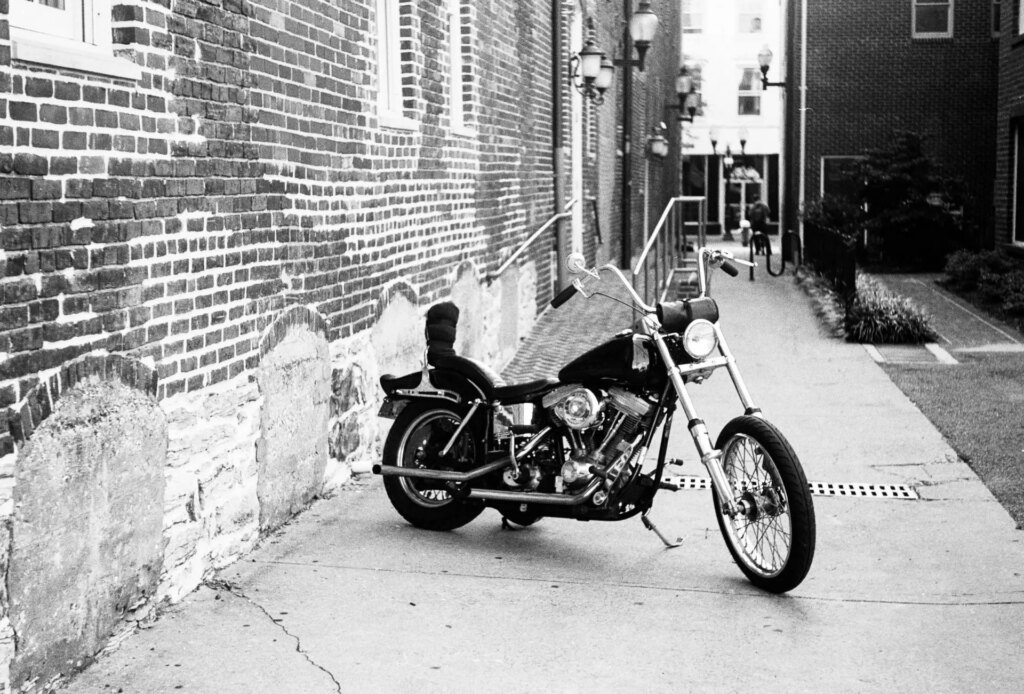
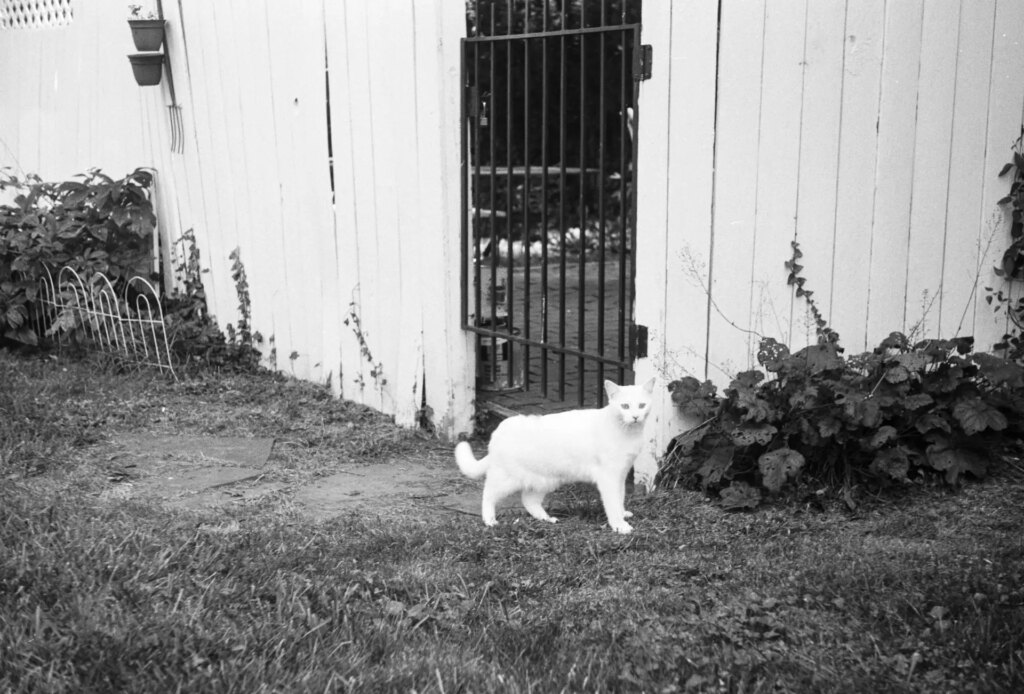
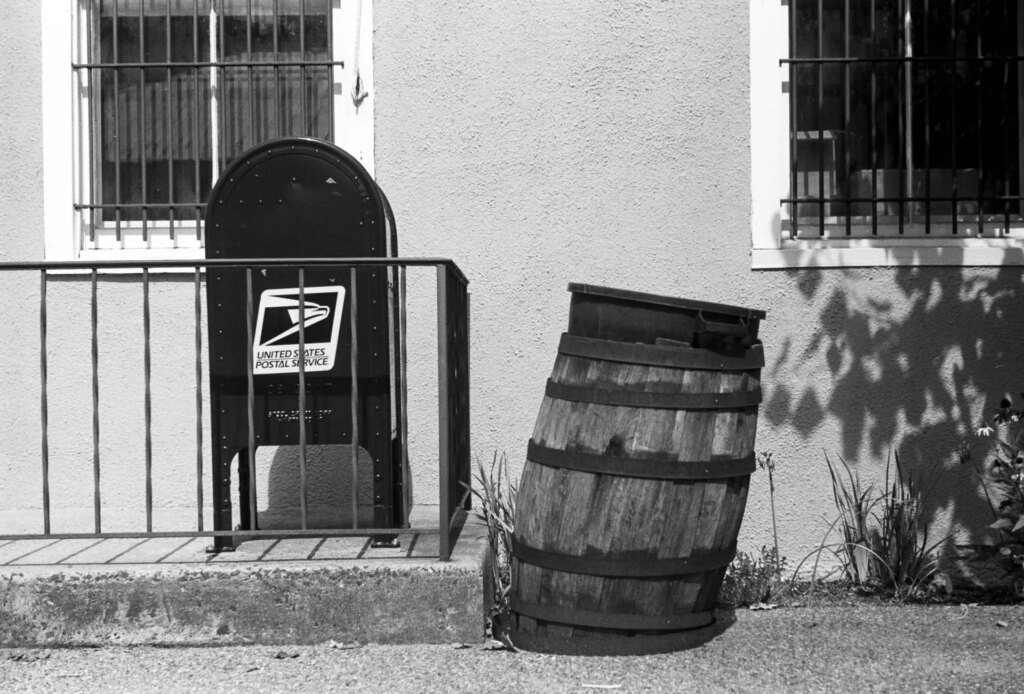
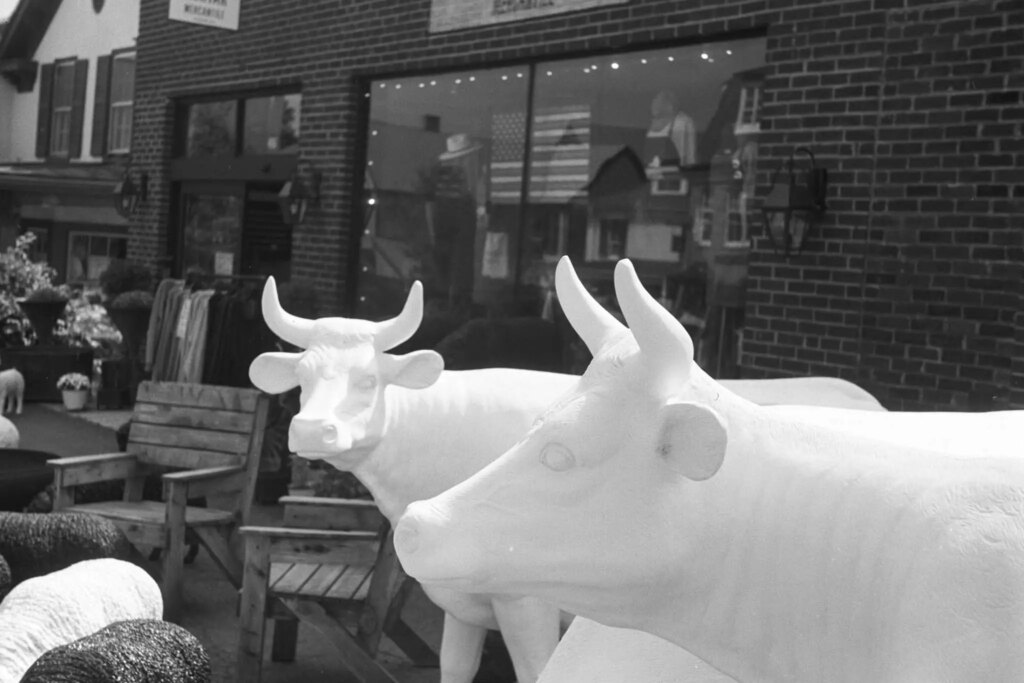
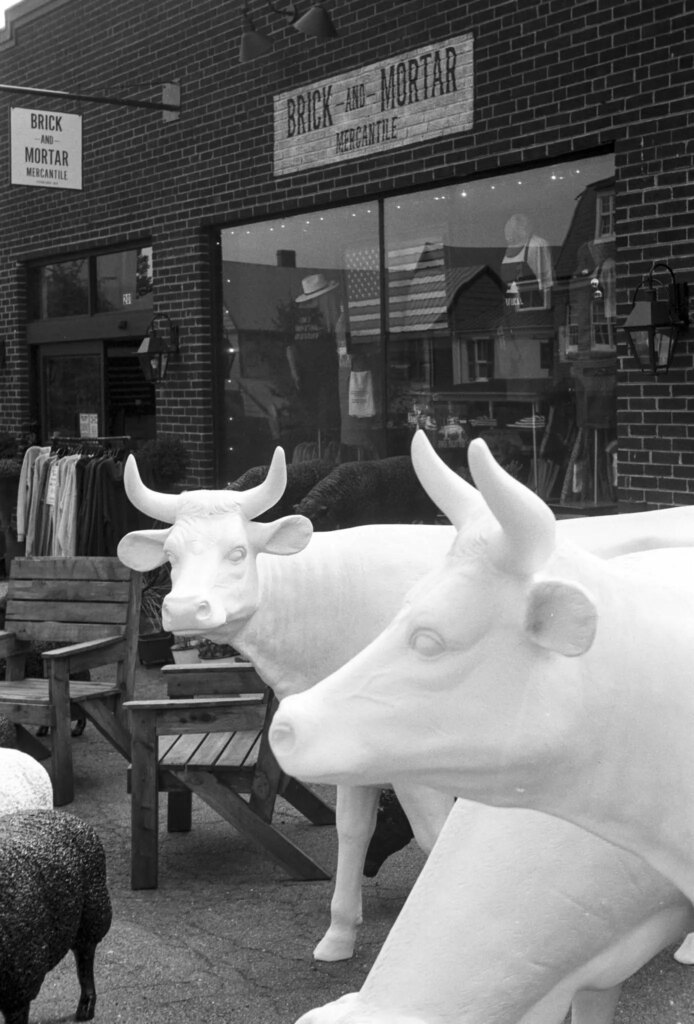
The real story here is constraints. It was interesting to learn that at iso 25, I was frequently using middle-value f/stops even in broad daylight at ~1/100 second exposure times. This allowed me to get some out of focus areas in my images. Of course, PanF Plus provides very low grain negatives. You may have noticed that my lens has the “old” f/stops: 3.5, 4.5, 6.3, 9, 12.5, and 18. This added another minor challenge, as my modern meter indicates exposure at the more common 2.8, 4, 5.6, 8, 11, and 16 numbers. An easy interpolation, but just one more step in making sure everything was right. Even though the Leica II has separate, small and squinty finders for focus and framing, I found mine to be easy to use and quite accurate, at least with a 3.5 maximum aperture.
Going forward, I am considering taking small steps toward modern capabilities with this camera. The next step may be to move up to my 50mm f/2 Leica Summar lens, which debuted in 1933 (Red Dot Camera date reference below). Following that, I may move on to using PanF Plus at the blazing full box speed of iso 50. I believe that those two improvements will be very significant in broadening the application of the Leica II in lower light situations.
I hope you’ve enjoyed this brief jump back 90 years in photographic technology. I certainly did.
by Reed A. George
dmc-365.blogspot.com
creativeobjective.com
References:
Morgan, Douglas O., Vestal, David, Broeker, Williiam L., Leica Manual, the Complete Book of 35mm Photography, 15th Ed., 1973.
Camera Quest Leica Screwmount Camera Serial Number Listing: link
Leica Screwmount Lens Serial Number Listing: link
Red Dot Camera Lens Serial Number Listing: link
Ilford PanF Plus datasheet: link
Share this post:
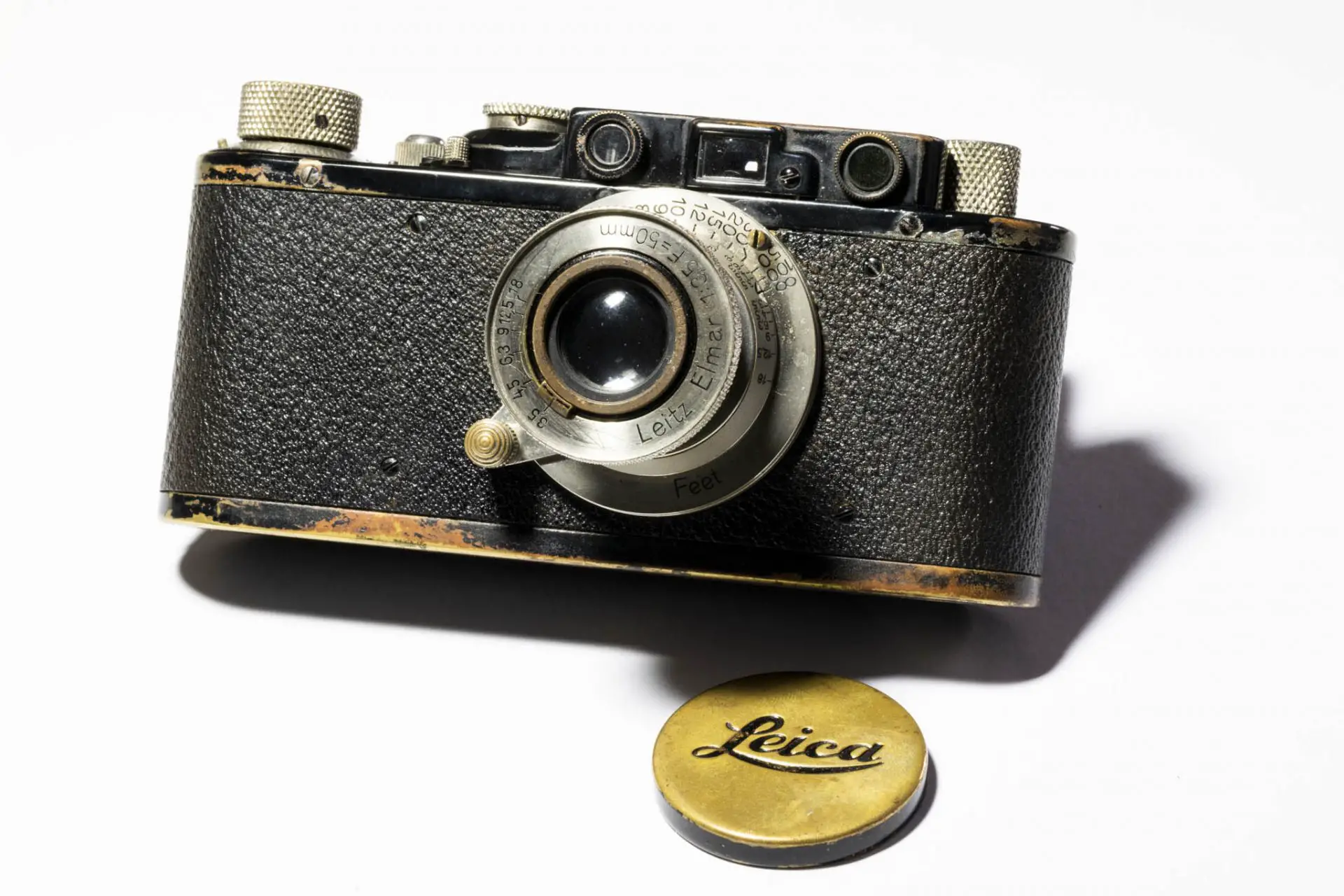








Comments
Jens on Appreciating the Challenges of Photography in 1932 (5 Frames with a Leica II & Elmar 5cm f/3.5 Lens) – By Reed George
Comment posted: 15/02/2023
William Parker on Appreciating the Challenges of Photography in 1932 (5 Frames with a Leica II & Elmar 5cm f/3.5 Lens) – By Reed George
Comment posted: 15/02/2023
John Tarrant on Appreciating the Challenges of Photography in 1932 (5 Frames with a Leica II & Elmar 5cm f/3.5 Lens) – By Reed George
Comment posted: 15/02/2023
DANIEL J CASTELLI on Appreciating the Challenges of Photography in 1932 (5 Frames with a Leica II & Elmar 5cm f/3.5 Lens) – By Reed George
Comment posted: 15/02/2023
Your posting could not have come at a bad time...I'm seriously looking to buy a 3F or 3G and fitting it w/the 35mm f/2.5 screw mount Voigtlander. I talk myself into it and out of it once a day. I don't need it, but I have this urge to make a part of my photography as difficult as possible. I do have my venerable M2 and a M4-P (we know how purist just hate the M4-2 & M4-P) so this would be just a somewhat nonsense purchase. But I'm like you in just loving the old style design.
I have a copy of the Leica Manual (c. 1971) and for Father's Day 2022 my wife gave me three mid-1950's Leica books she found in an antique shop. Love reading these volumes. These three books got me think seriously about buying a Barnack Leica.
BTW, the Sekonic Twinmate II displays the older shutter speed & f/stops. I do believe the analog Luna-Pro also has them on their dial.
Your photos display these older machines are quite capable of producing high quality pictures to this day. Your pic of the bovines proves that. Nice work.
Comment posted: 15/02/2023
Comment posted: 15/02/2023
Markus Larjomaa on Appreciating the Challenges of Photography in 1932 (5 Frames with a Leica II & Elmar 5cm f/3.5 Lens) – By Reed George
Comment posted: 15/02/2023
Comment posted: 15/02/2023
Kurt Ingham on Appreciating the Challenges of Photography in 1932 (5 Frames with a Leica II & Elmar 5cm f/3.5 Lens) – By Reed George
Comment posted: 15/02/2023
James S. on Appreciating the Challenges of Photography in 1932 (5 Frames with a Leica II & Elmar 5cm f/3.5 Lens) – By Reed George
Comment posted: 16/02/2023